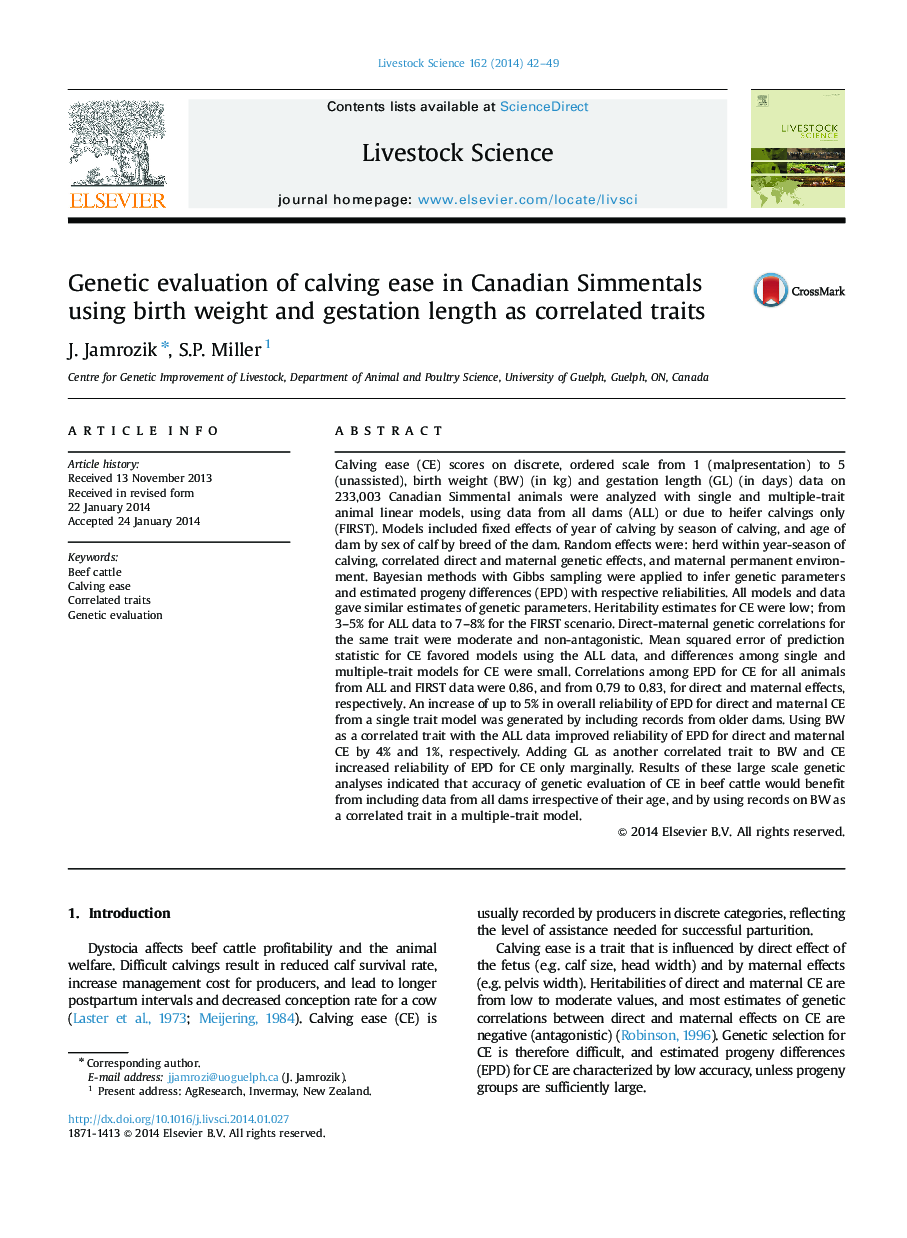| Article ID | Journal | Published Year | Pages | File Type |
|---|---|---|---|---|
| 5790183 | Livestock Science | 2014 | 8 Pages |
Abstract
Calving ease (CE) scores on discrete, ordered scale from 1 (malpresentation) to 5 (unassisted), birth weight (BW) (in kg) and gestation length (GL) (in days) data on 233,003 Canadian Simmental animals were analyzed with single and multiple-trait animal linear models, using data from all dams (ALL) or due to heifer calvings only (FIRST). Models included fixed effects of year of calving by season of calving, and age of dam by sex of calf by breed of the dam. Random effects were: herd within year-season of calving, correlated direct and maternal genetic effects, and maternal permanent environment. Bayesian methods with Gibbs sampling were applied to infer genetic parameters and estimated progeny differences (EPD) with respective reliabilities. All models and data gave similar estimates of genetic parameters. Heritability estimates for CE were low; from 3-5% for ALL data to 7-8% for the FIRST scenario. Direct-maternal genetic correlations for the same trait were moderate and non-antagonistic. Mean squared error of prediction statistic for CE favored models using the ALL data, and differences among single and multiple-trait models for CE were small. Correlations among EPD for CE for all animals from ALL and FIRST data were 0.86, and from 0.79 to 0.83, for direct and maternal effects, respectively. An increase of up to 5% in overall reliability of EPD for direct and maternal CE from a single trait model was generated by including records from older dams. Using BW as a correlated trait with the ALL data improved reliability of EPD for direct and maternal CE by 4% and 1%, respectively. Adding GL as another correlated trait to BW and CE increased reliability of EPD for CE only marginally. Results of these large scale genetic analyses indicated that accuracy of genetic evaluation of CE in beef cattle would benefit from including data from all dams irrespective of their age, and by using records on BW as a correlated trait in a multiple-trait model.
Related Topics
Life Sciences
Agricultural and Biological Sciences
Animal Science and Zoology
Authors
J. Jamrozik, S.P. Miller,
